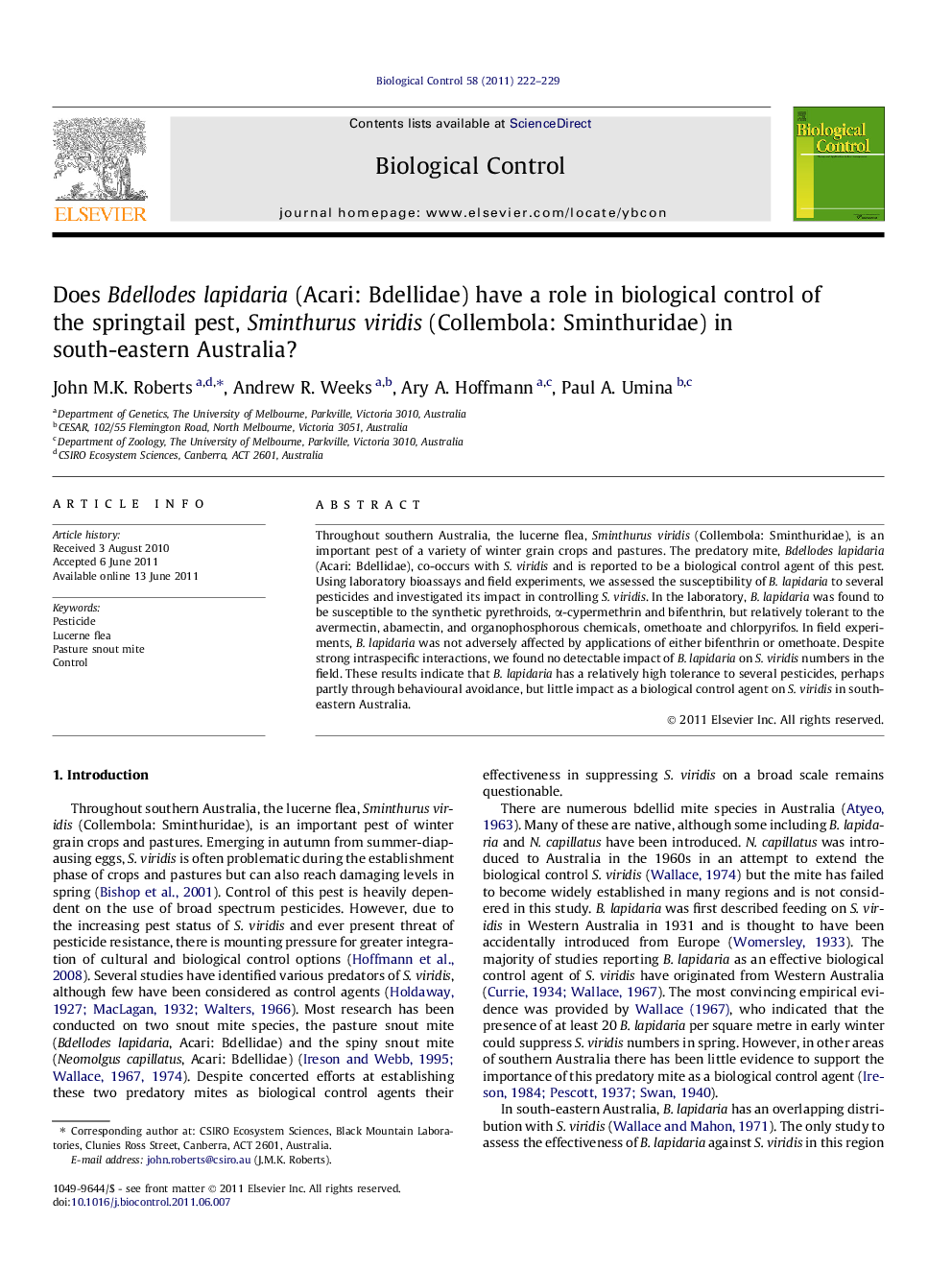| Article ID | Journal | Published Year | Pages | File Type |
|---|---|---|---|---|
| 4504253 | Biological Control | 2011 | 8 Pages |
Throughout southern Australia, the lucerne flea, Sminthurus viridis (Collembola: Sminthuridae), is an important pest of a variety of winter grain crops and pastures. The predatory mite, Bdellodes lapidaria (Acari: Bdellidae), co-occurs with S. viridis and is reported to be a biological control agent of this pest. Using laboratory bioassays and field experiments, we assessed the susceptibility of B. lapidaria to several pesticides and investigated its impact in controlling S. viridis. In the laboratory, B. lapidaria was found to be susceptible to the synthetic pyrethroids, α-cypermethrin and bifenthrin, but relatively tolerant to the avermectin, abamectin, and organophosphorous chemicals, omethoate and chlorpyrifos. In field experiments, B. lapidaria was not adversely affected by applications of either bifenthrin or omethoate. Despite strong intraspecific interactions, we found no detectable impact of B. lapidaria on S. viridis numbers in the field. These results indicate that B. lapidaria has a relatively high tolerance to several pesticides, perhaps partly through behavioural avoidance, but little impact as a biological control agent on S. viridis in south-eastern Australia.
Graphical abstractFigure optionsDownload full-size imageDownload as PowerPoint slideHighlights► Pyrethroids were more toxic than organophosphates against B. lapidaria in the lab. ► In the field, Bdellodes lapidaria was not adversely affected by pesticide applications. ► B. lapidaria had no impact on pest Sminthurus viridis numbers in field plots.
